
Contact me Go to home page Return to main travel page
La Corrèze, Auvergne, Lyon & Paris
2016
*
Michael Kluckner
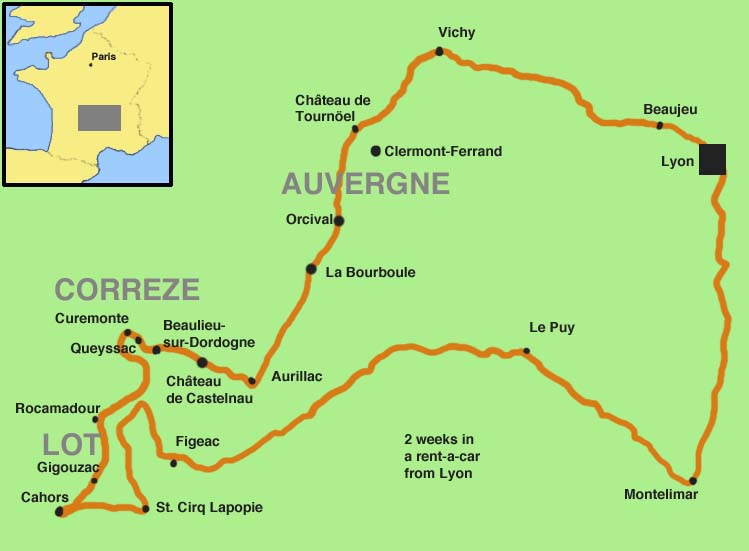
| An opportunity for a few weeks in
September and October to enjoy France again, and for part of it to
revisit a familiar area along the Dordogne and Lot rivers where we
had travelled and stayed in 1986 and 1990. I looked forward to
painting landscapes with châteaux as well as the usual pleasures
of a pencil and sketchbook observing everyday people. We ended
with a few days in Paris. After travelling for several days through Auvergne, our base in the Corrèze was a rural gîte near Queyssac-les-Vignes, as close as we could get to the picturesque town of Beaulieu-sur-Dordogne. "Auvergne" is a region in France; "Corrèze" is a département of the Limousin region, while "Lot" is a département of the Midi-Pyrenées region. The countryside is hilly, forested with oak and chestnut, and quilted with pastures for the thousands of cattle that provide milk for cheese and meat for the myriad dishes beloved of the French. Every town and village has a Catholic church: as Charles de Gaulle said, France has a hundred cheeses and only one religion (he was comparing it with England's hundred religions and very few cheeses). Click here to see a roll of snapshots with the cellphone, supplementing all the artwork which begins below. It opens as a pop-up on a computer and as a separate window on a tablet or phone. |
| The avalanche of anglophone culture is much more
evident than even on our last
visit in 2008. I don't think we heard music with French
lyrics more than once in the entire trip – in cafés, bars, or
coming out of cars. Paris is much more international than it used
to be – more like London – rather than being such a bastion of
French culture, and the impact of tourism and the internet is
easily seen in small towns all over the country – many more people
speak a little English. C'est triste. |
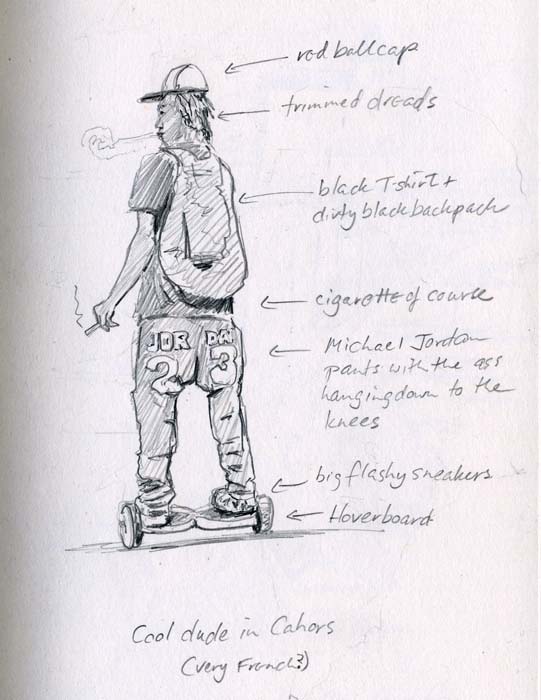 |
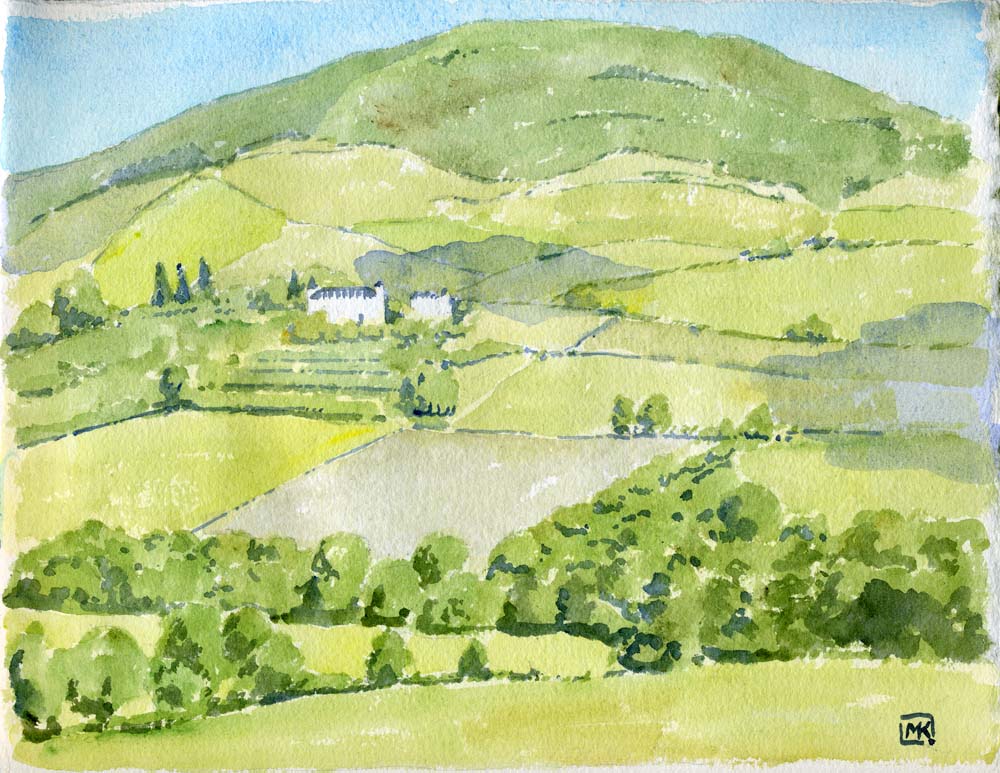
Near Beaujeu in the Beaujolais region west of Lyon – a typical patchwork of fields, vineyards, olive groves and forest.
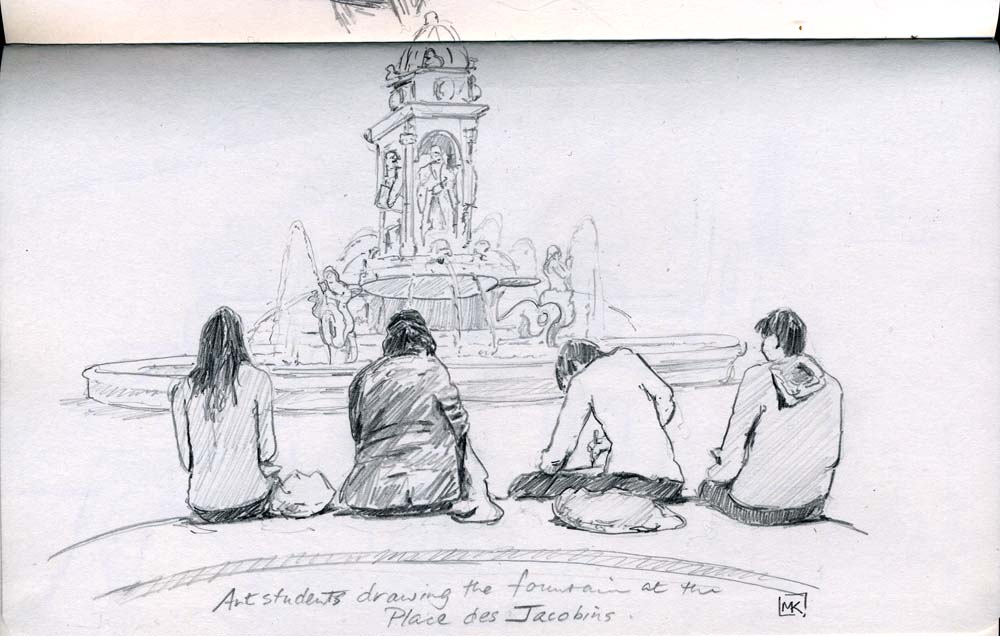
| An arty atmosphere pervades Lyon – lots of students, rather like
Aix-en-Provence and Cahors, and museums to the fine arts, printing
and film (the Lumière Brothers, who effectively invented cinema,
were from Lyon). (Below) the Musée des Beaux Arts, sometimes called "le petit Louvre," was something of a disappointment, with too much religious painting and very little from the region. There are a few photos of its interior in the snapshots file. |
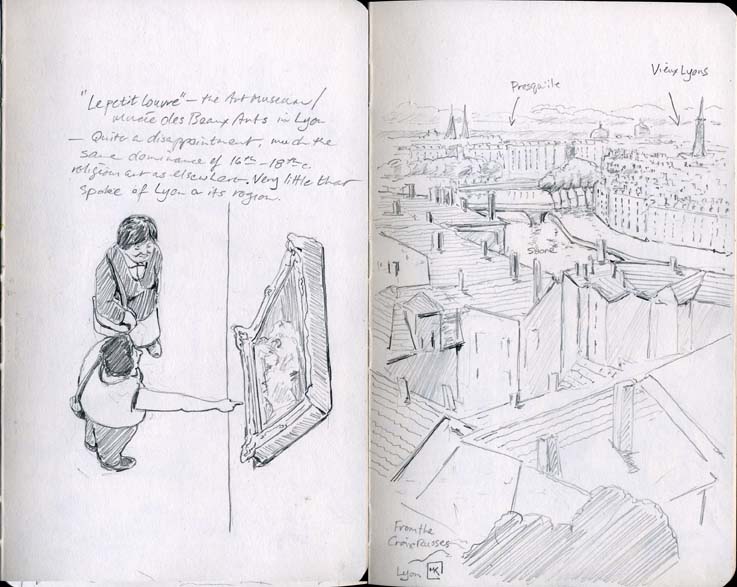
| Below: the grand basilica on the wooded hillside above Vieux
Lyon is little more than a century old and is worth a visit more
for its mosaics inside than for its exterior. People say its odd
design is like an elephant turned upside down. Beside it, the
mini-Eiffel Tower was erected by anticlerical French people to
demonstrate the triumph of the secular state over the church. |
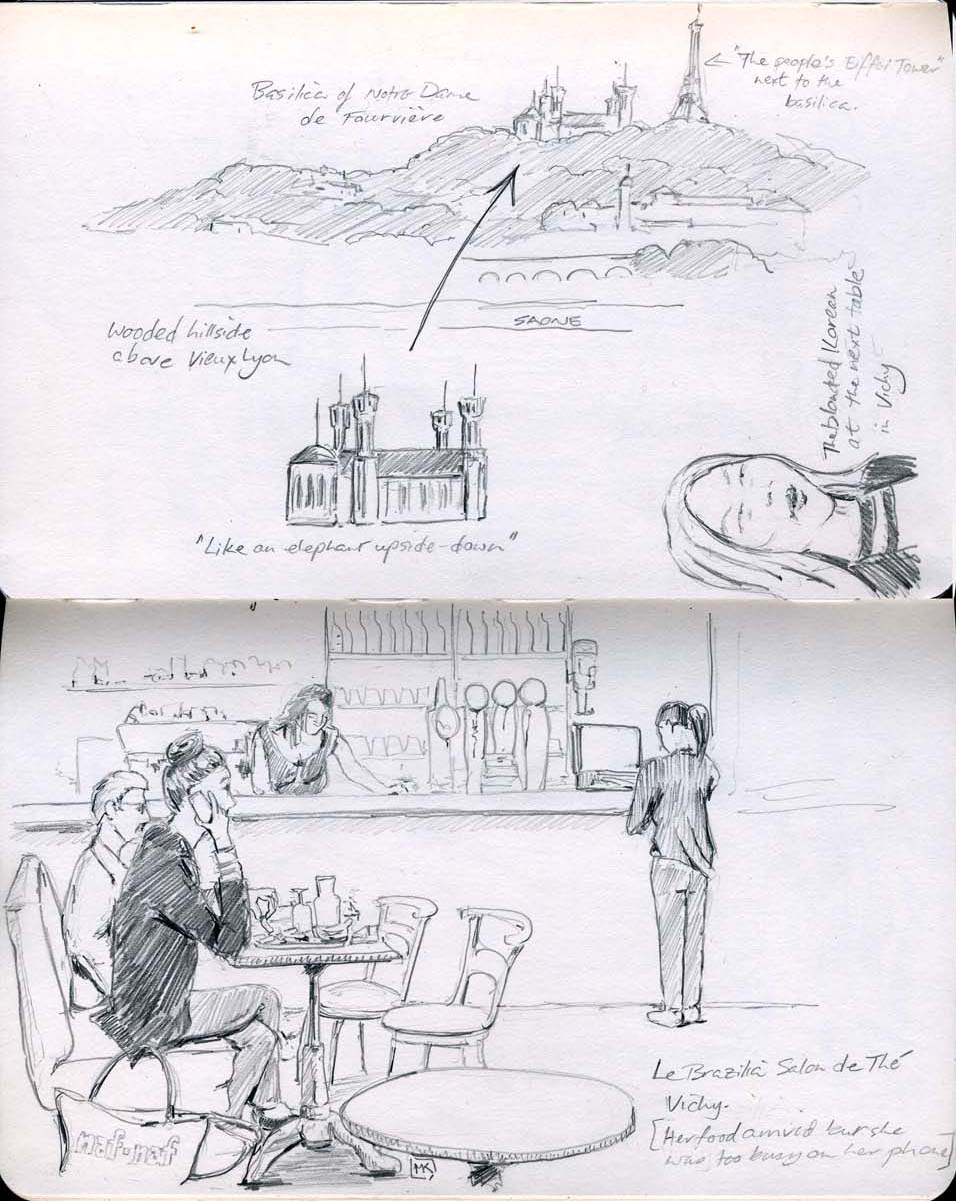
Above: Her frites got cold as she was unwilling to end her phone call.
There are more Vichy photos in the snapshots file.
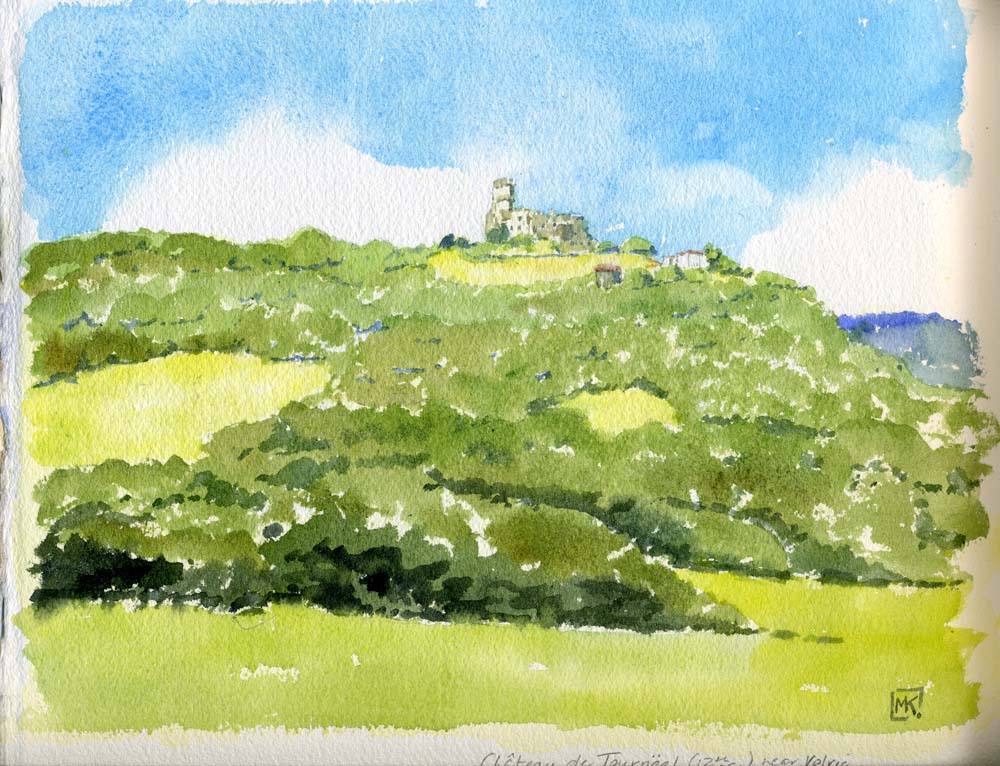
Above: Château de Tournöel near Volvic, another famous source of mineral water south of Vichy.
Below: rugged landscape in the Auvergne – La Roche Tuilière and La Roche Sanadoire near Orcival.
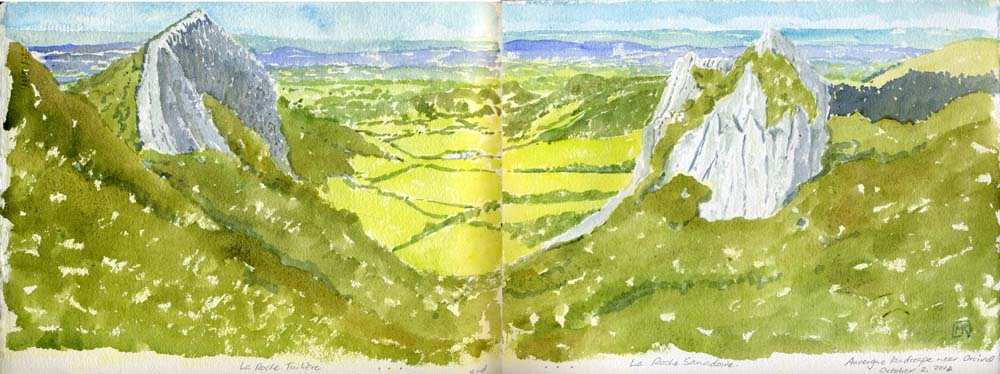
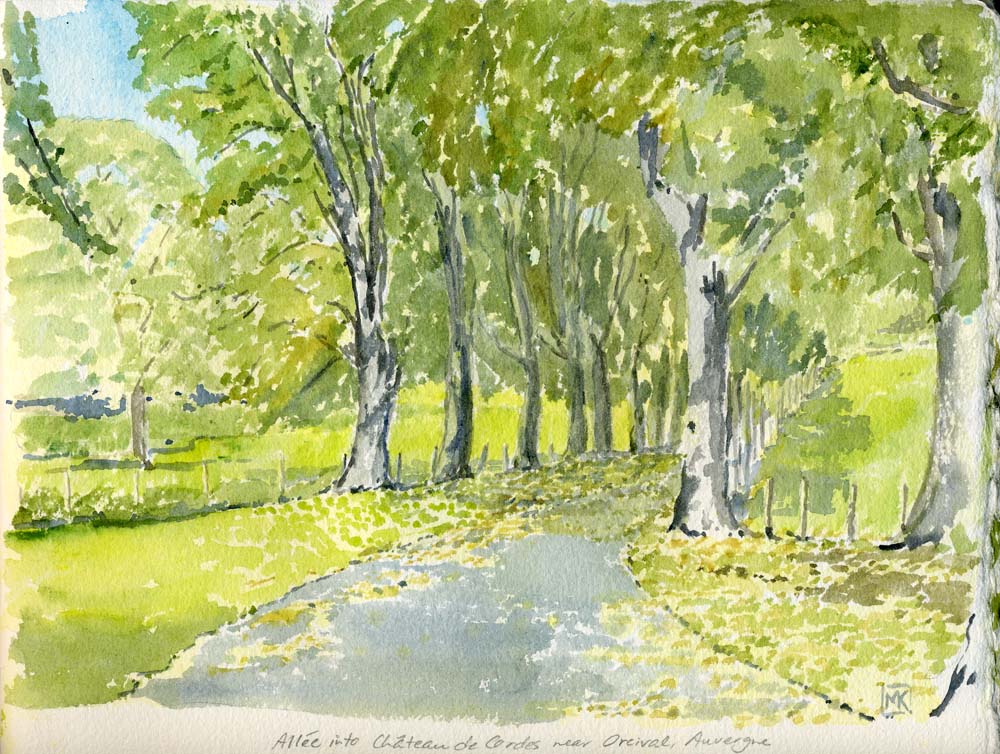
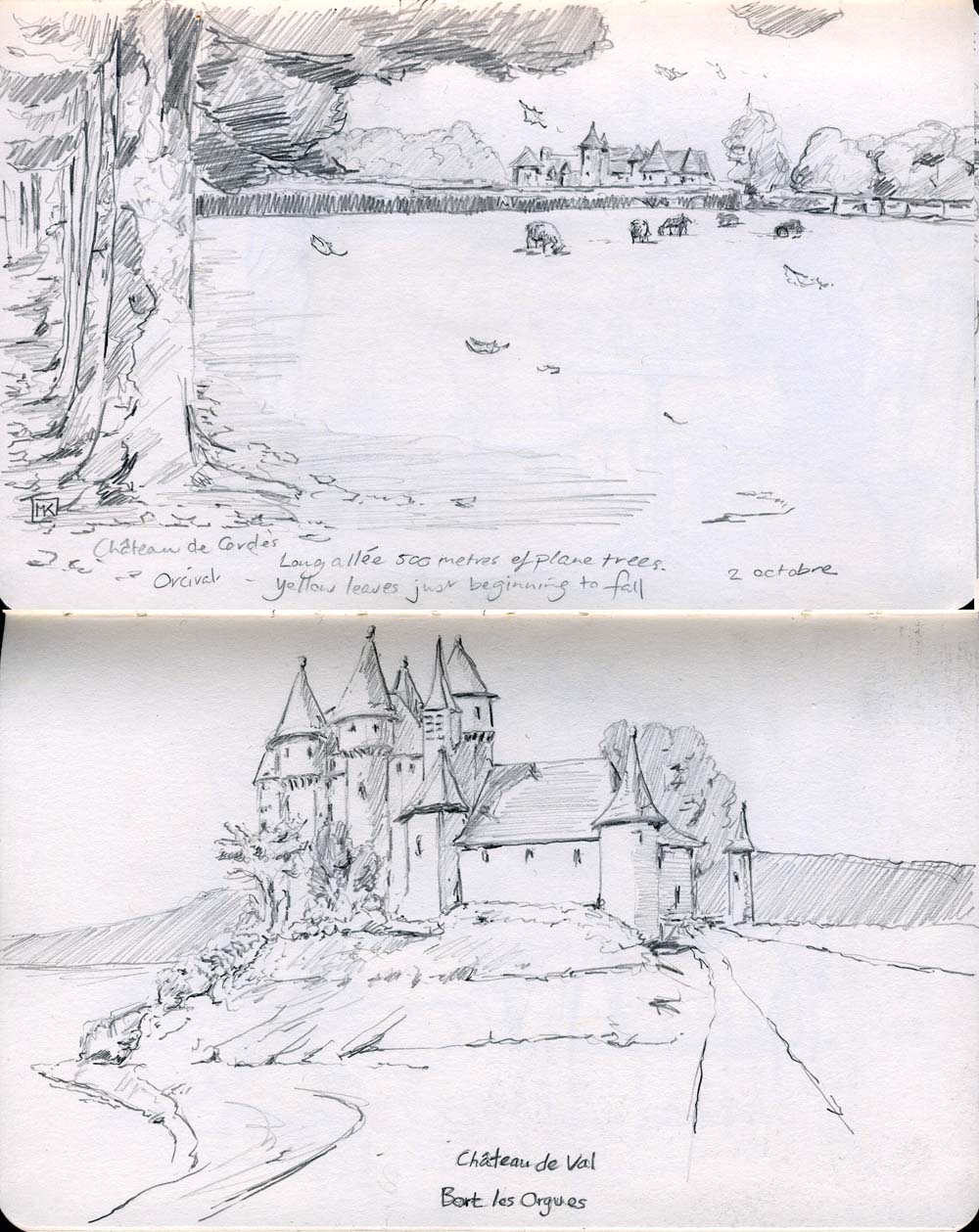
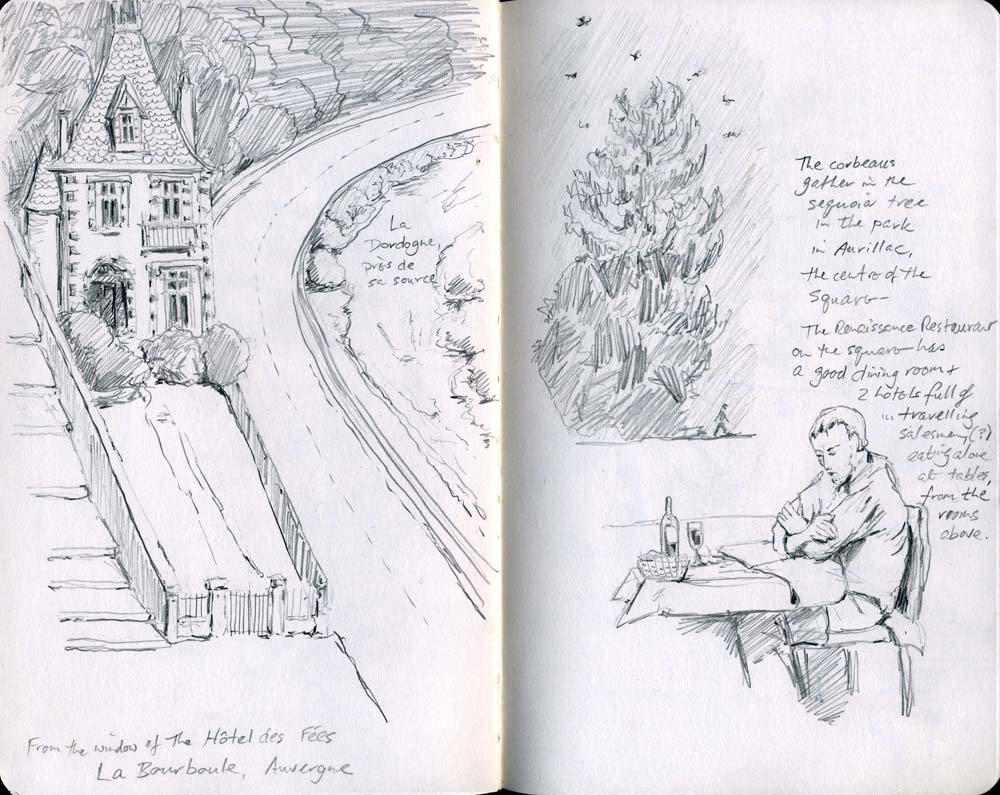
| Below: although we were in danger of castle-fatigue, the visit
to the château at Castelnau-Brétenoux was worth it, in part
because of the guide's explanation of why beds were so short in
that long-ago time. |
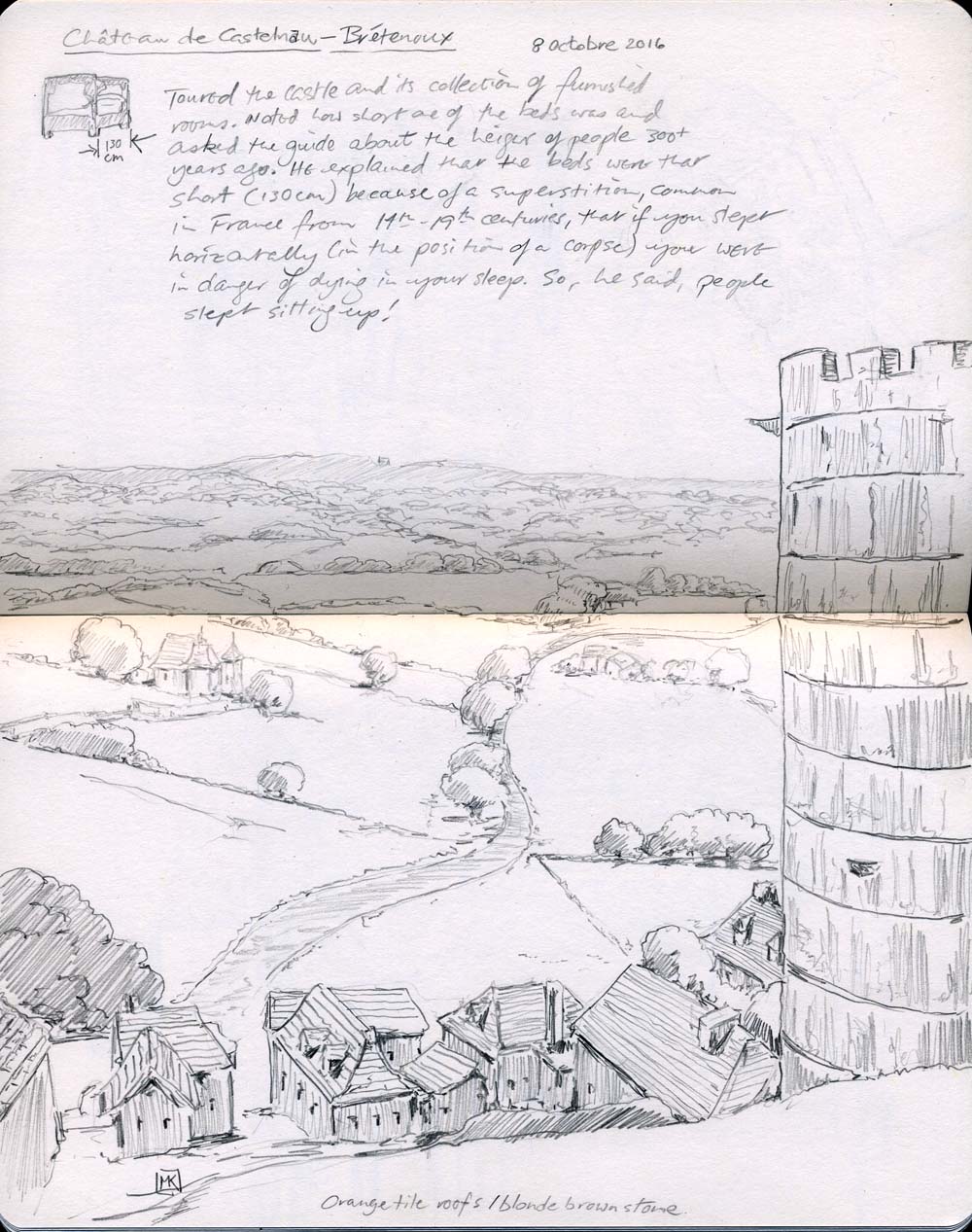
Beaulieu-sur-Dordogne
| We decided to make Beaulieu-sur-Dordogne, near the southeast
corner of La Corrèze, our base for several days. There was no
accommodation other than hotels in the town itself, but we found a
gîte (a rural cottage) near Queyssac about 10 km away, shopped the
Saturday market and a traiteur (for deli-take out meals) in a
nearby village, and went out and back on day trips through the
region. Right: La Chapelle des Pénitents on the Dordogne River, as I painted it on the first trip there 30 years ago. Below: same sketchbook, probably the same day, an abandoned hunting-lodge sort of place near Beaulieu. We looked around but couldn't find it again. |
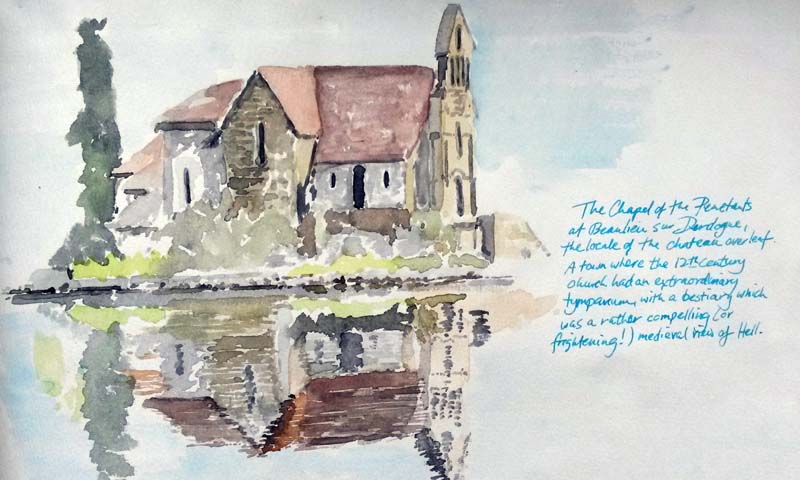 1986 – first sketchbook (poor-quality smooth paper and the tight brushwork of my early days) |
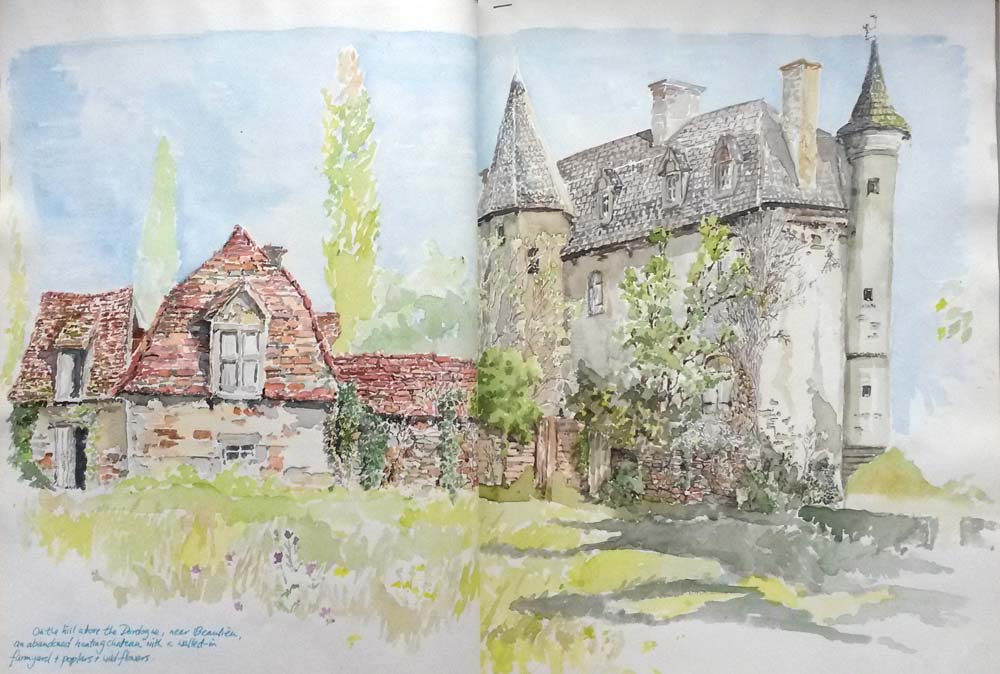
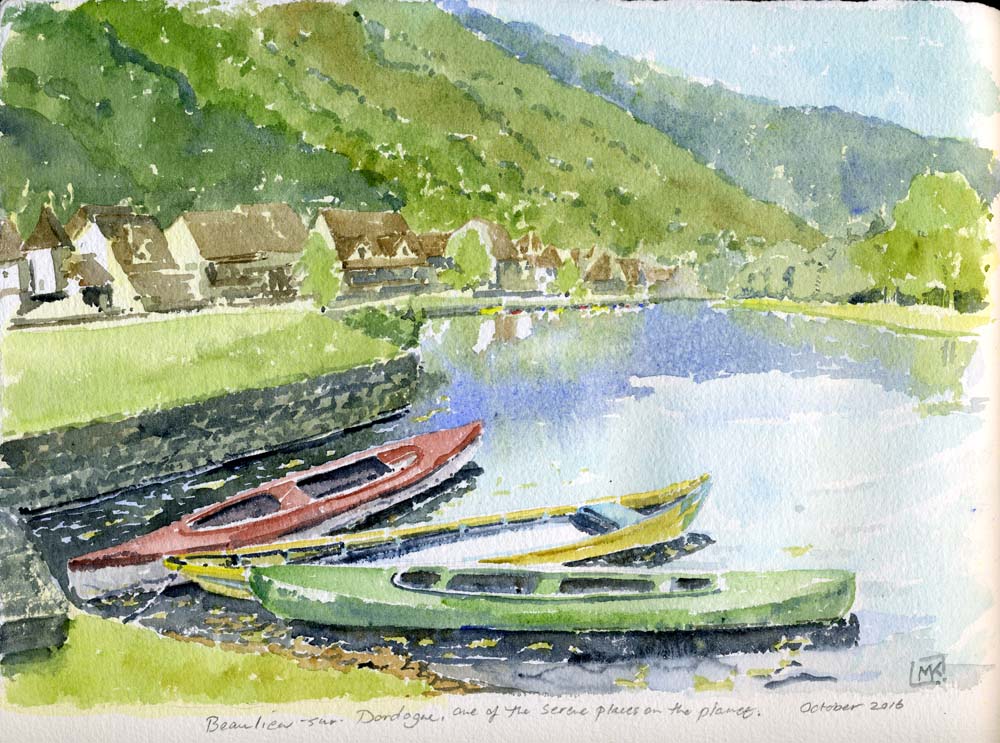
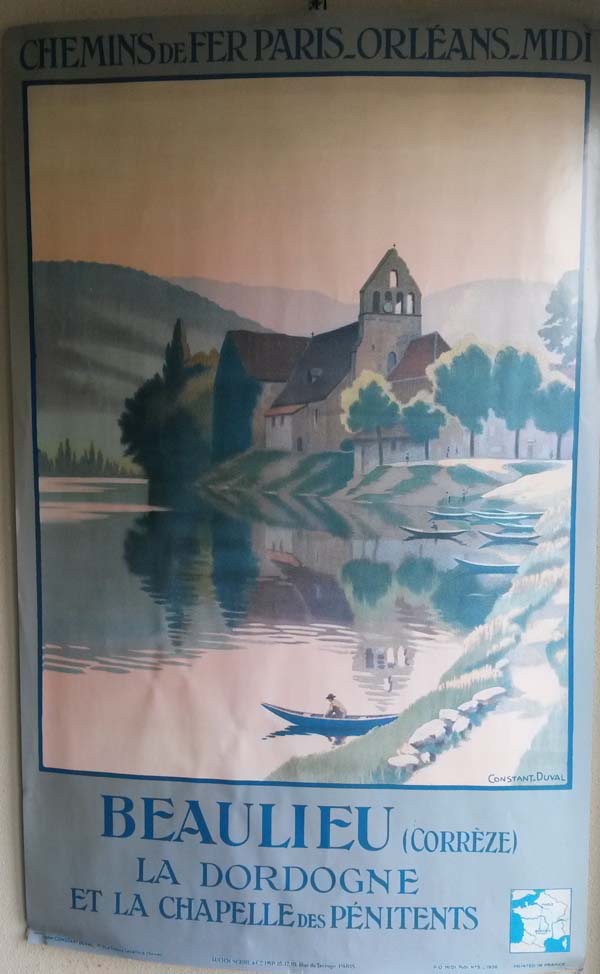
A poster on the wall of the tourism office
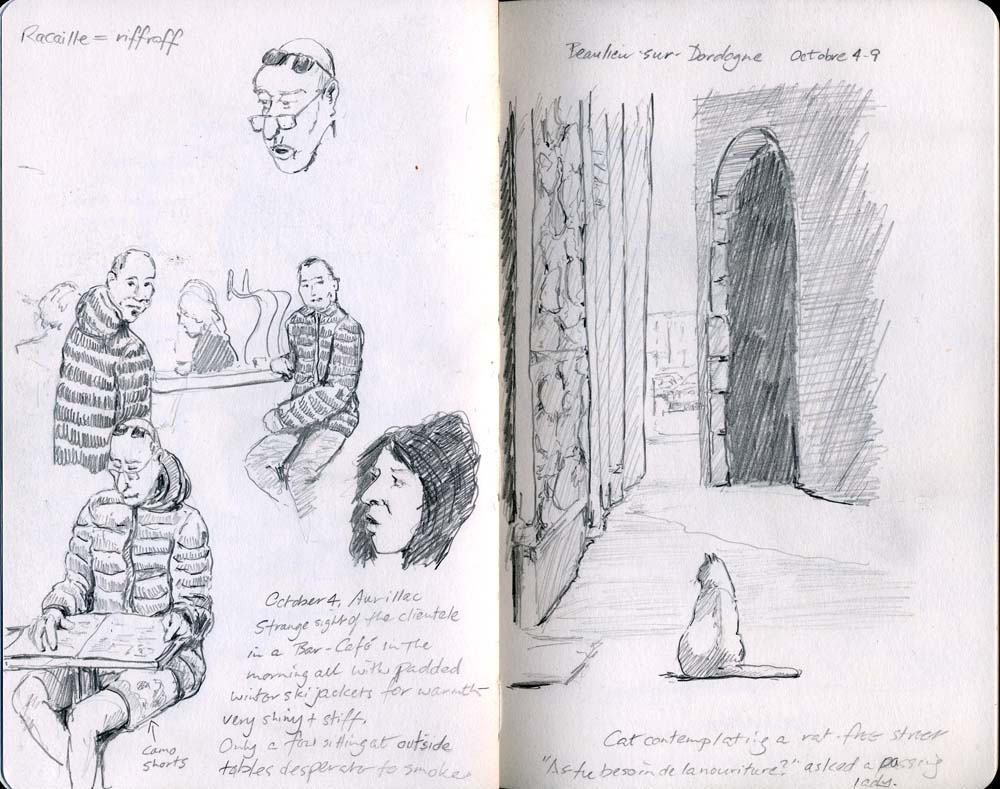
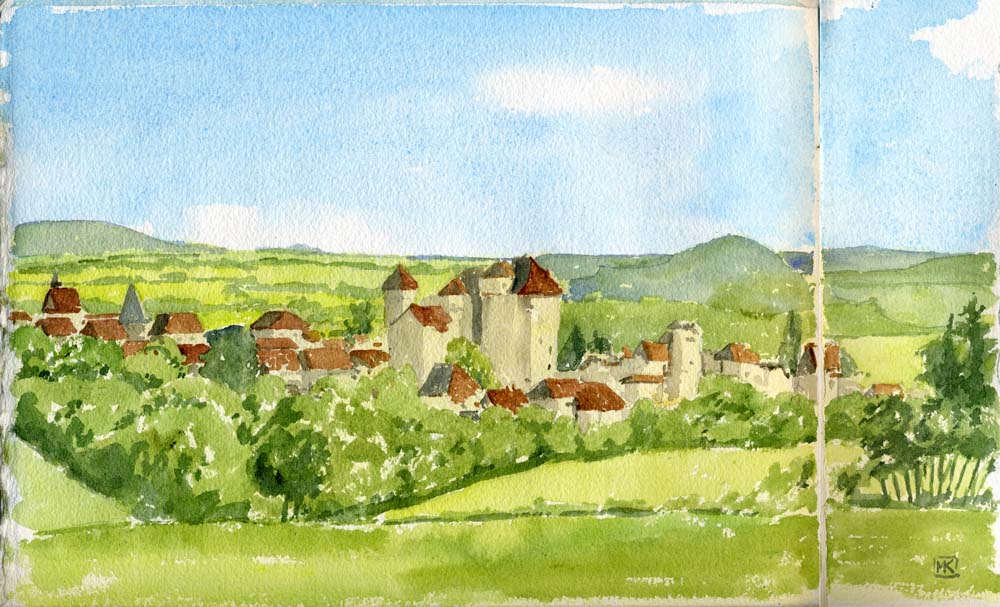
Curemonte, a serenely pretty village surrounded by pastures dotted with cows. (Sheep are rarely seen except on higher, poorer pastures.)
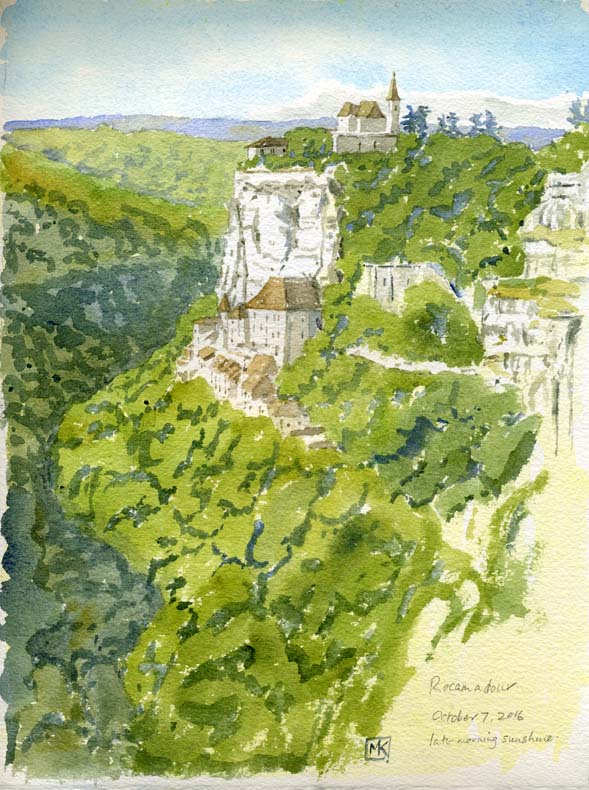
| Rocamadour – worth a journey, as the Michelin guide
says. Stacked up on the hillside in three tiers: the trades and
commoners at the bottom, ecclesiastical in the middle, and
aristocratic/military at the top. The town itself is intensely touristy, but the view of it from any angle is sublime. |
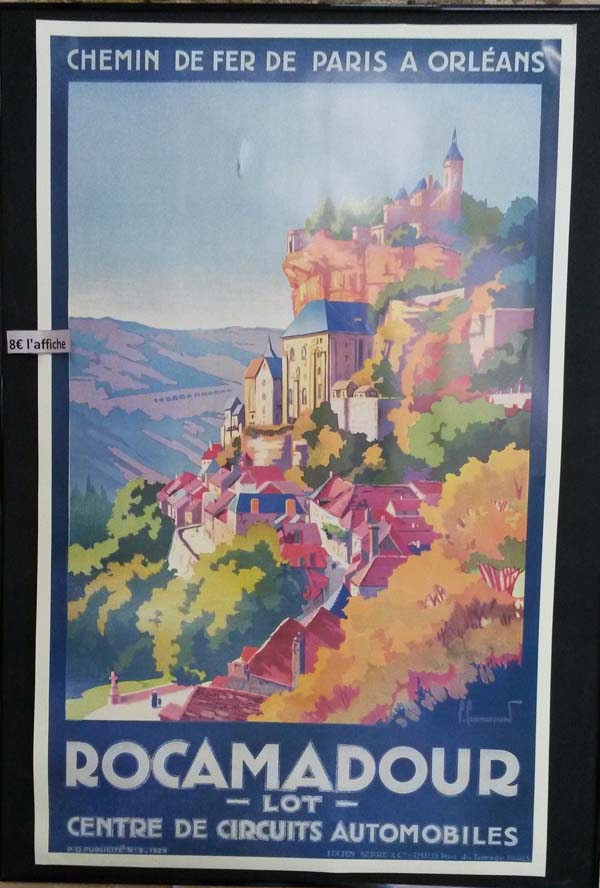 |
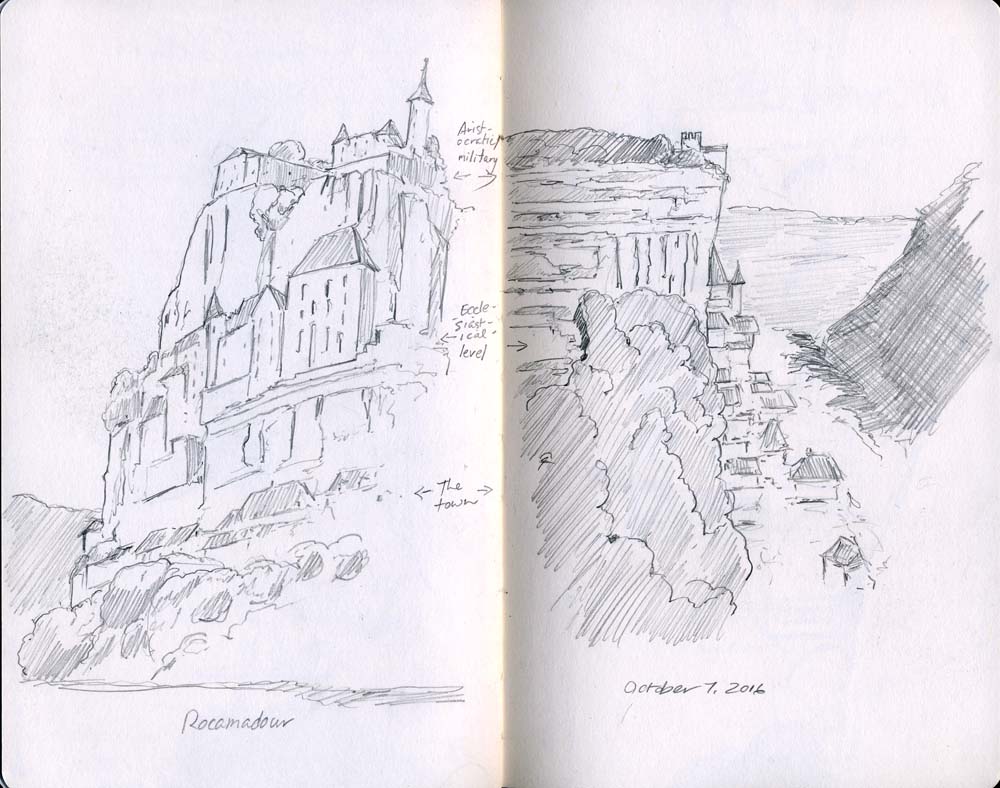
| Below: The other incredibly dramatic village is St. Cirq
Lapopie, on the Lot River east of Cahors. Like Rocamadour, the
view of it (and from it) is the attraction, at least to me, as
most of the commerce has been turned over to tourist shops of
varying quality. |
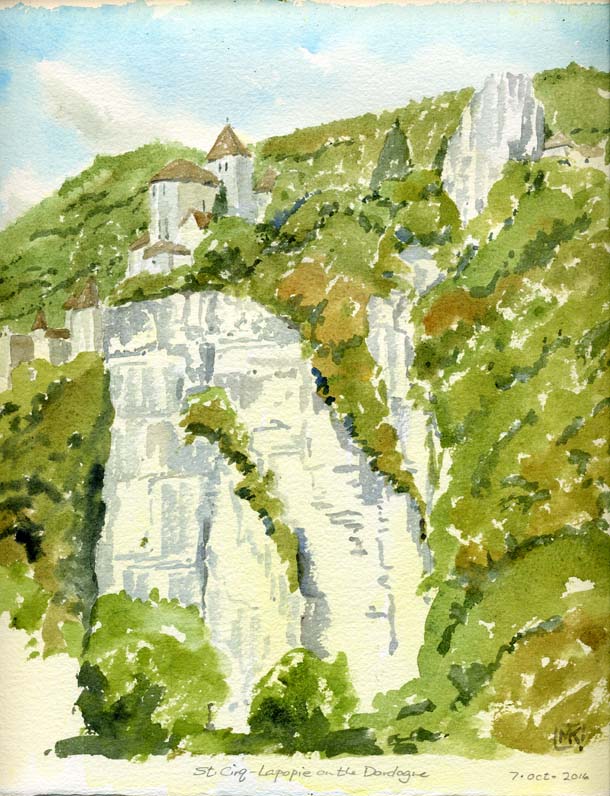
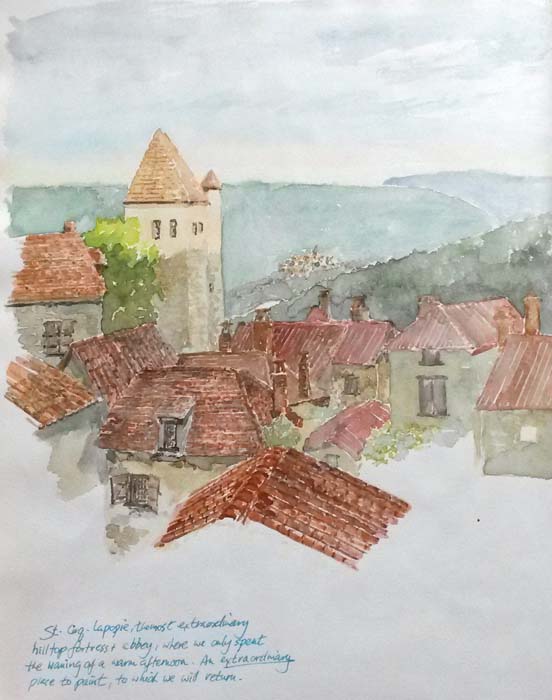
Above: St. Cirq Lapopie from the 1986 sketchbook
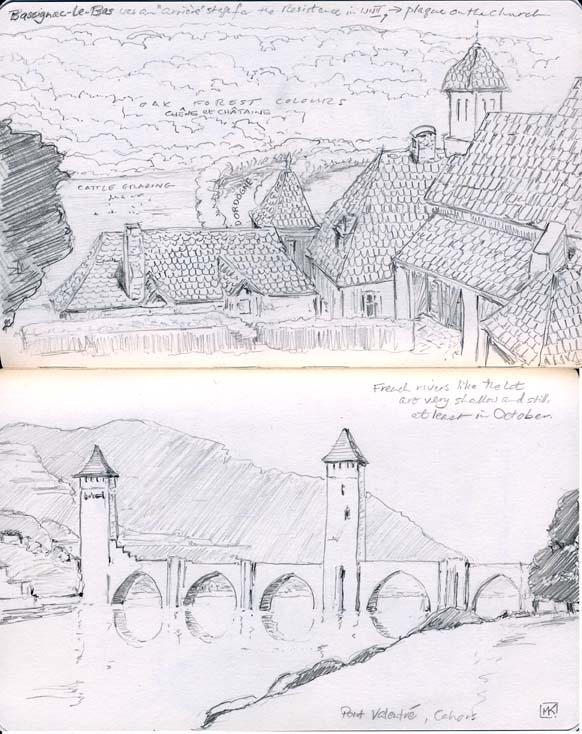
Below: we spent 2 weeks in July, 1990, in a gîte in a little village near Cahors called Gigouzac. We passed through there on this trip, stopping just briefly, and saw that nothing had changed. The watercolours below were painted then; the building is the pigonnier, the pigeon roost – a way of collecting la fiente (poop for fertilizer) – of M. Delayre, who is probably long in his grave by now. |
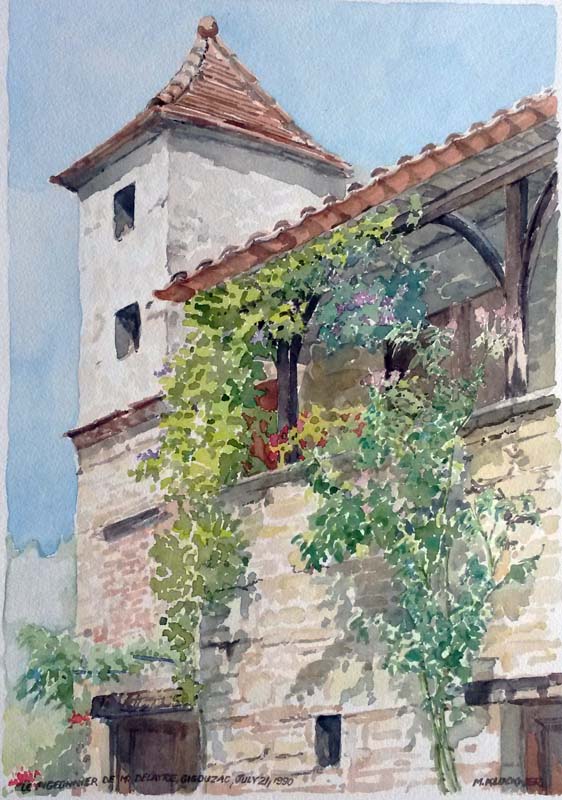
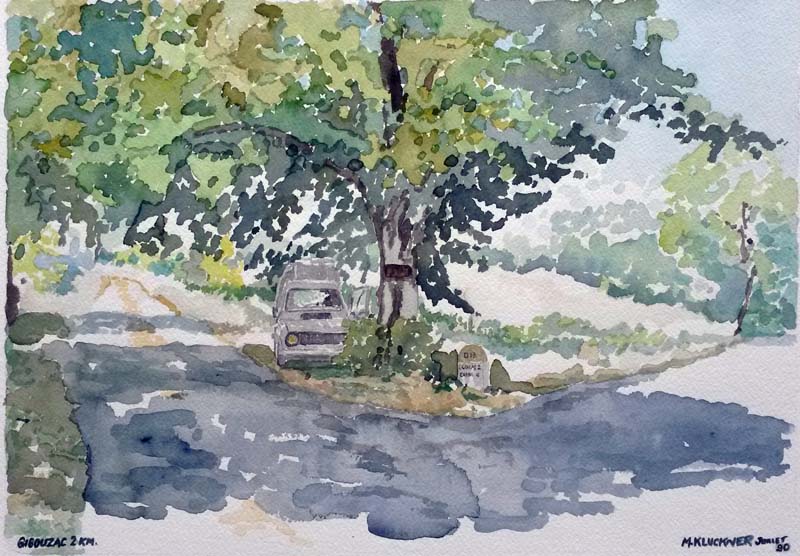
Below: the ruined castle of Saint-Laurent-les-Tours near Saint Céré
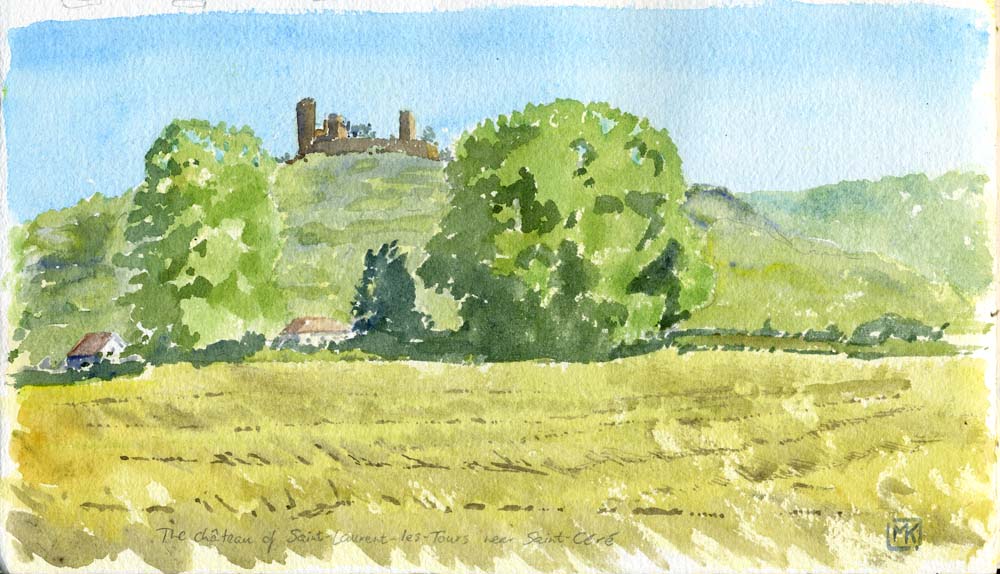
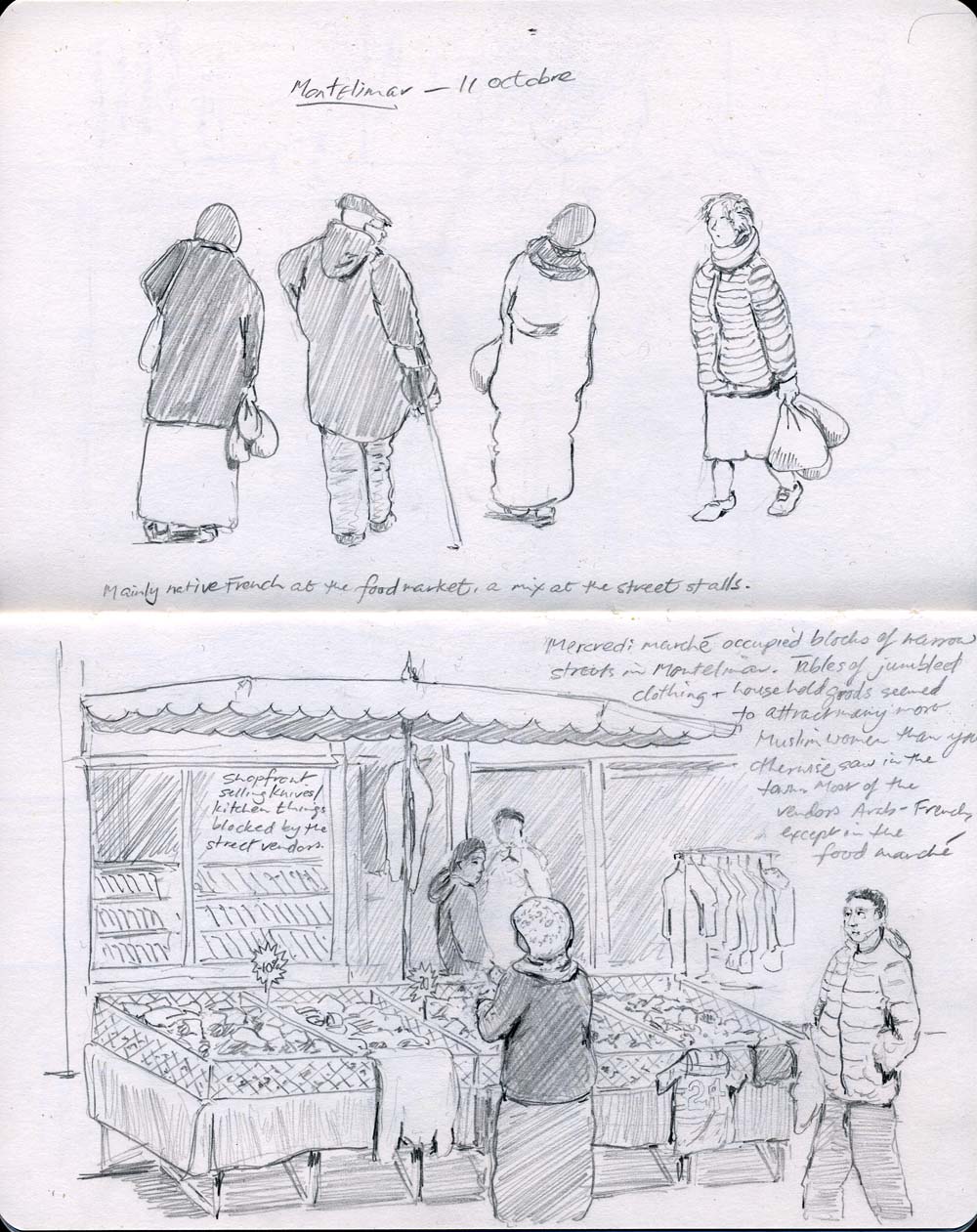
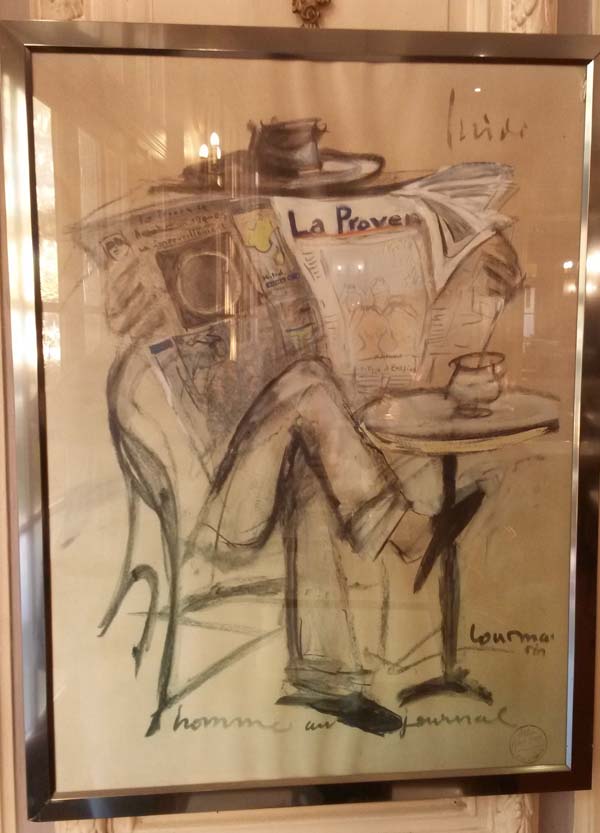
Favourite café in Montelimar, above and below...
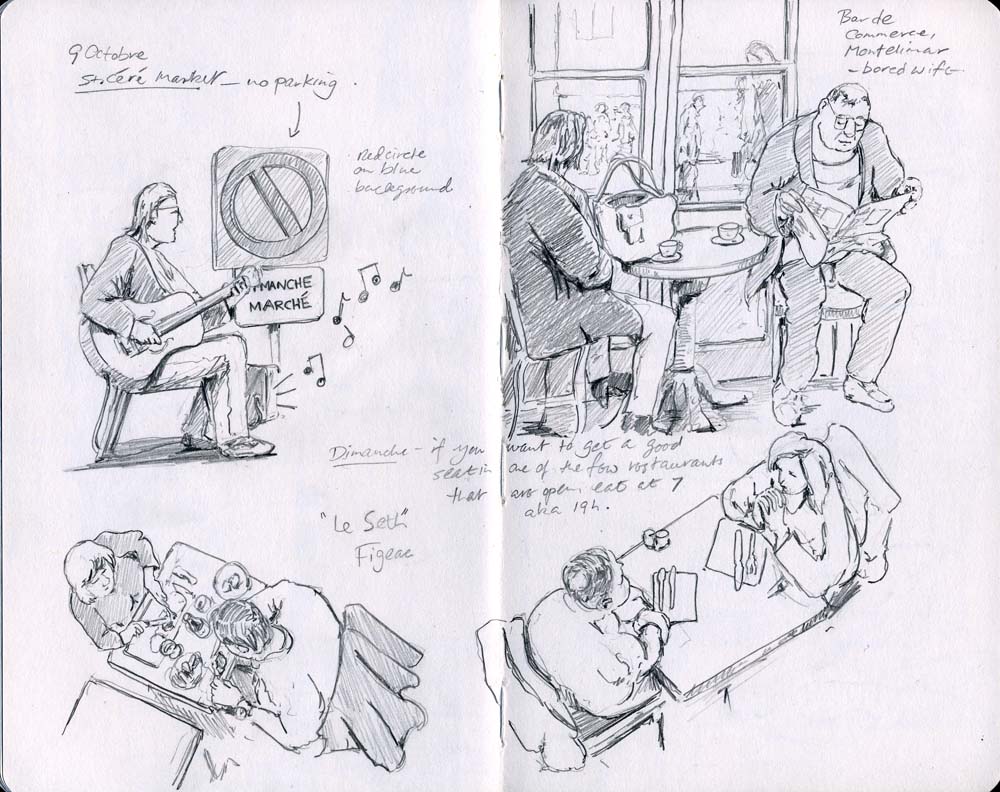
The typical Sunday and Monday closings put restaurant space at a premium in the towns; Paris is pretty well open 7 days a week, though.
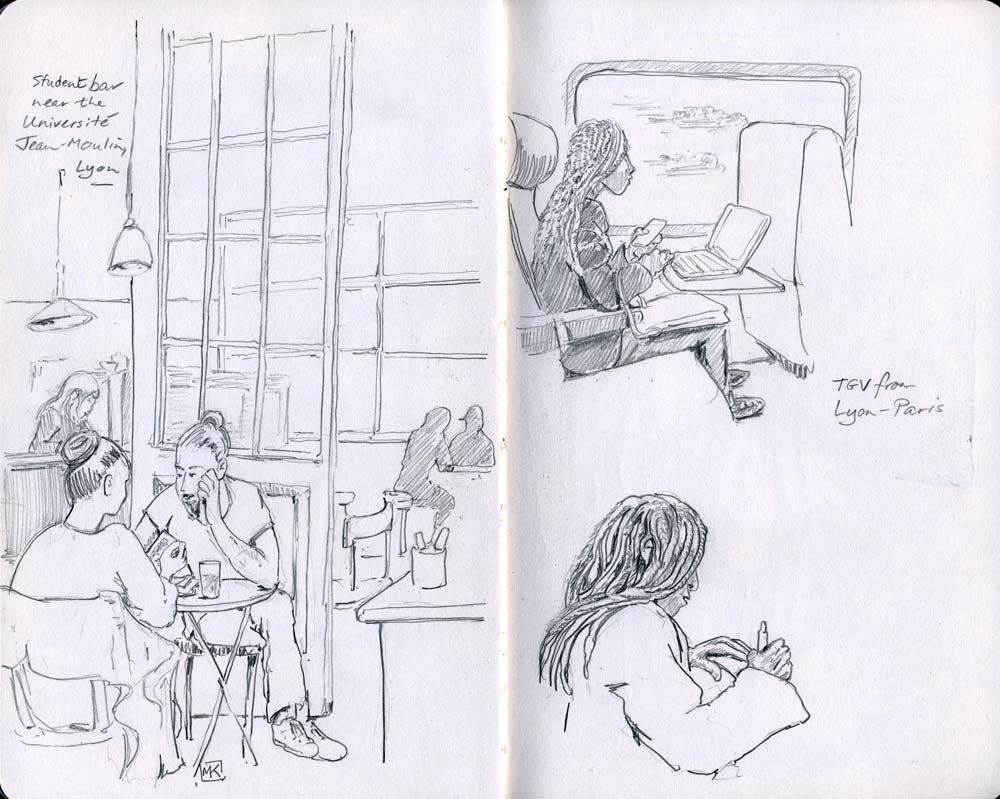
And, in Paris.... very surprised to come upon an excellent exhibition of American painting at L'Orangerie...
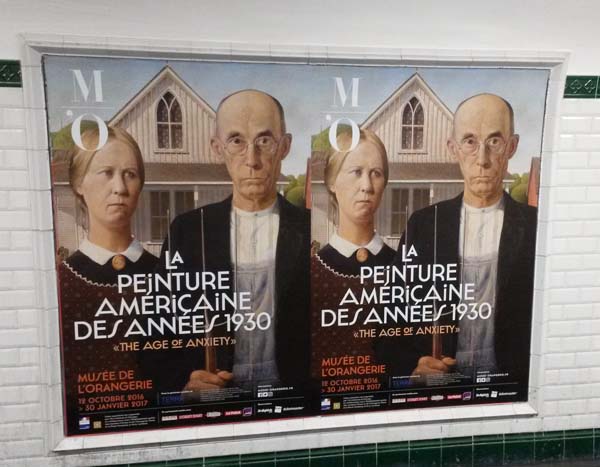
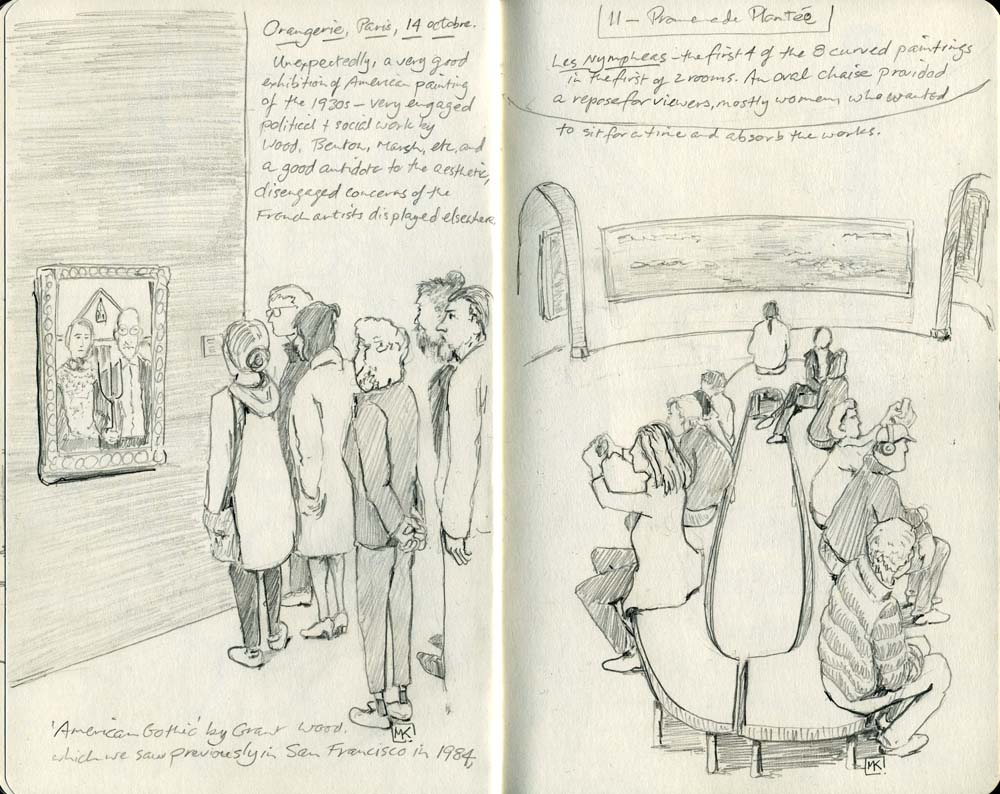
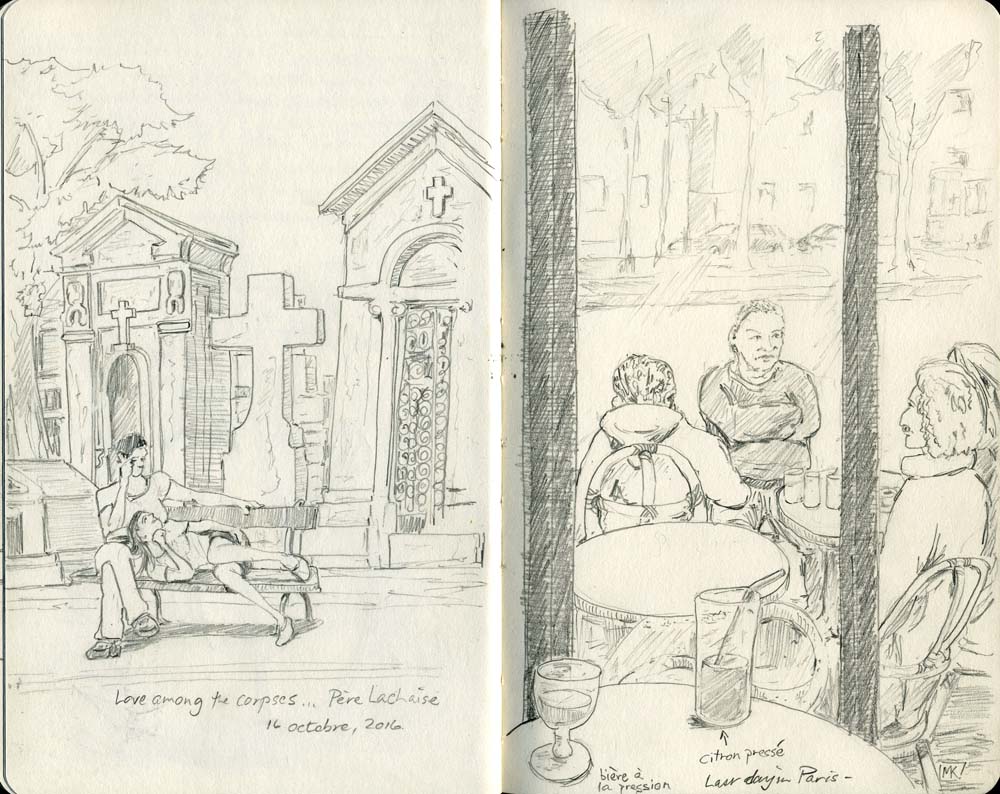
Above: at Père Lachaise. I'm always astonished at people's behaviour in cemeteries!
Photos of signs and weirdnesses, plus some buildings too complex to draw easily, are in the snapshots file.
Contact me Go to home page Return to main travel page
Artwork & text © Michael Kluckner, 2016